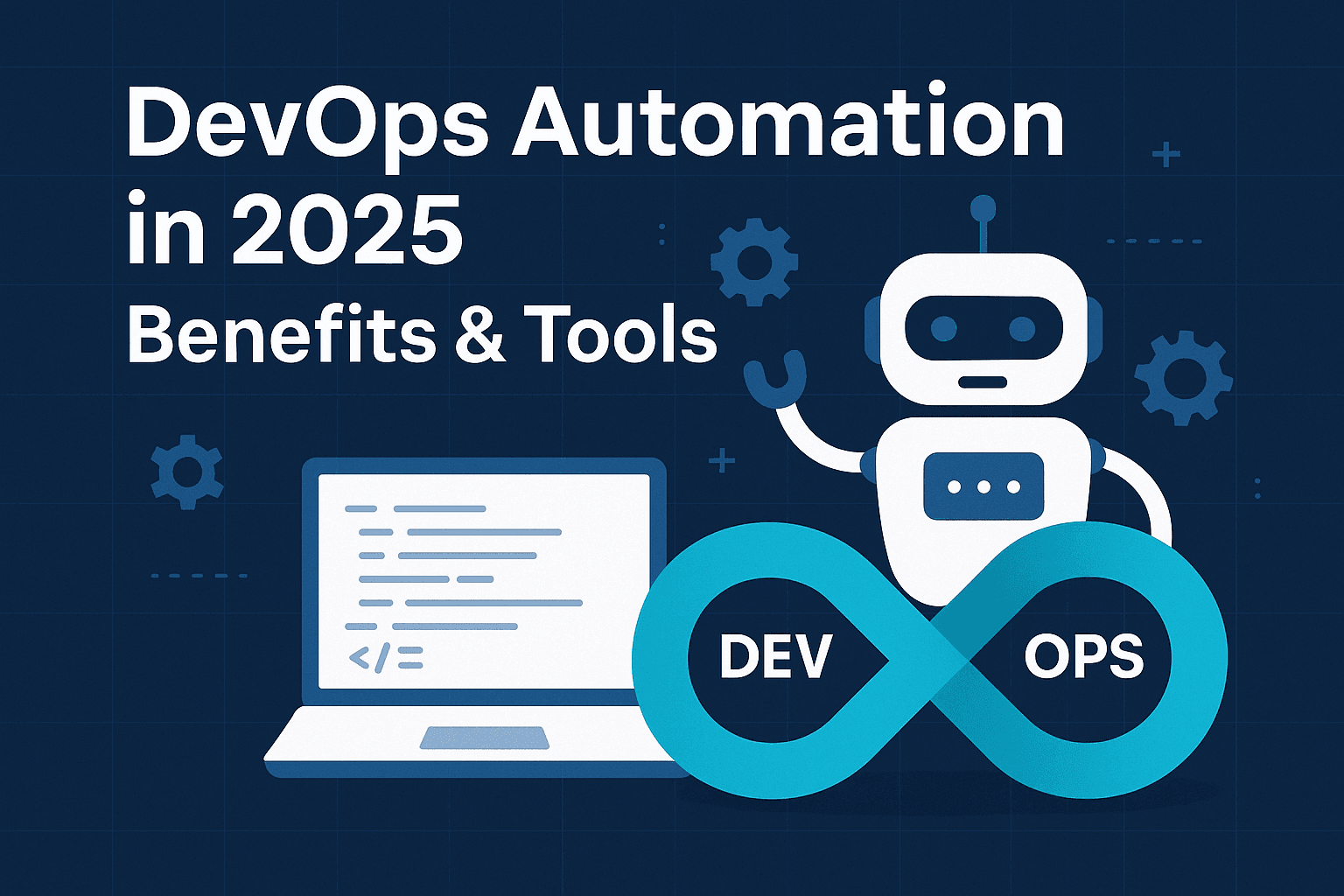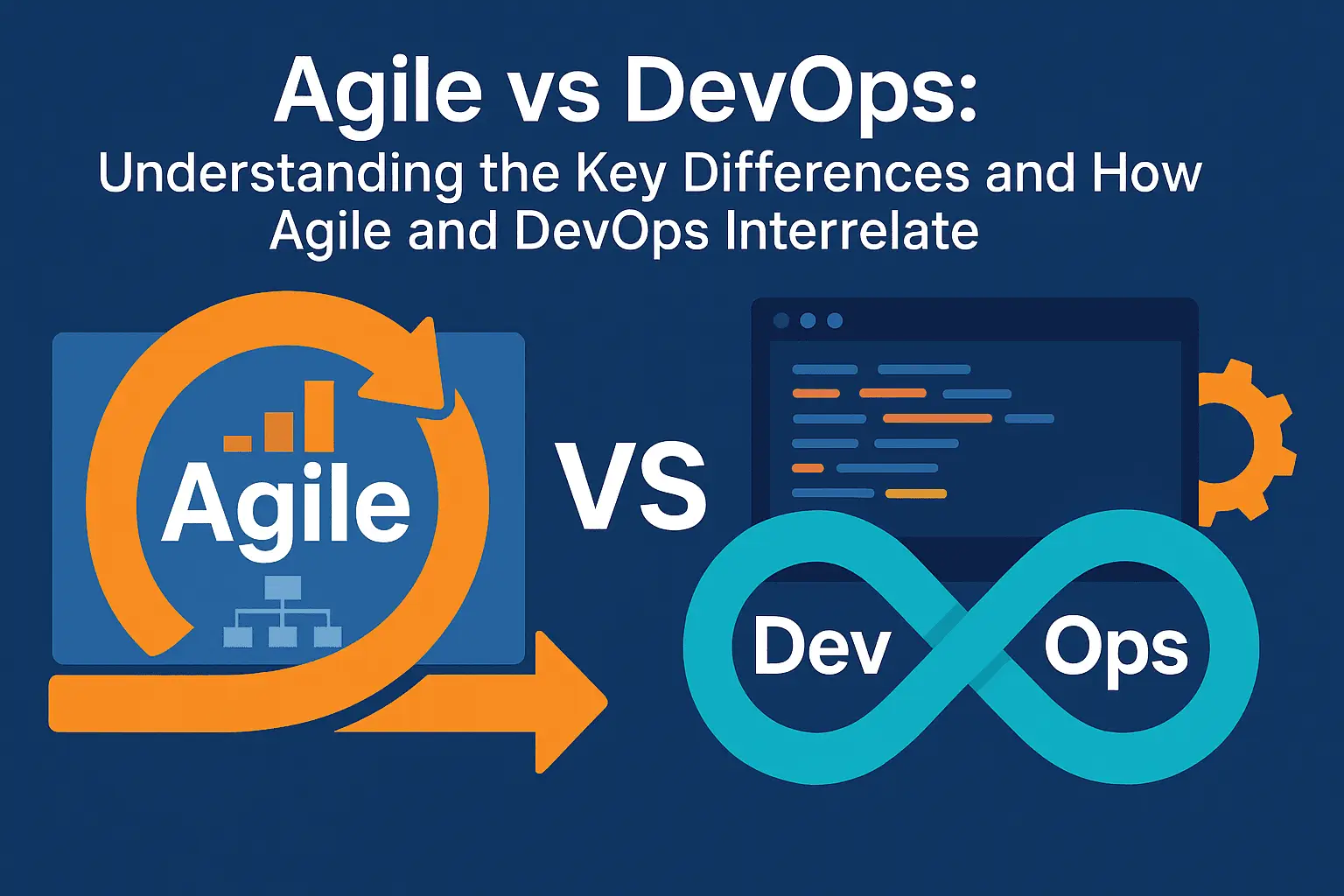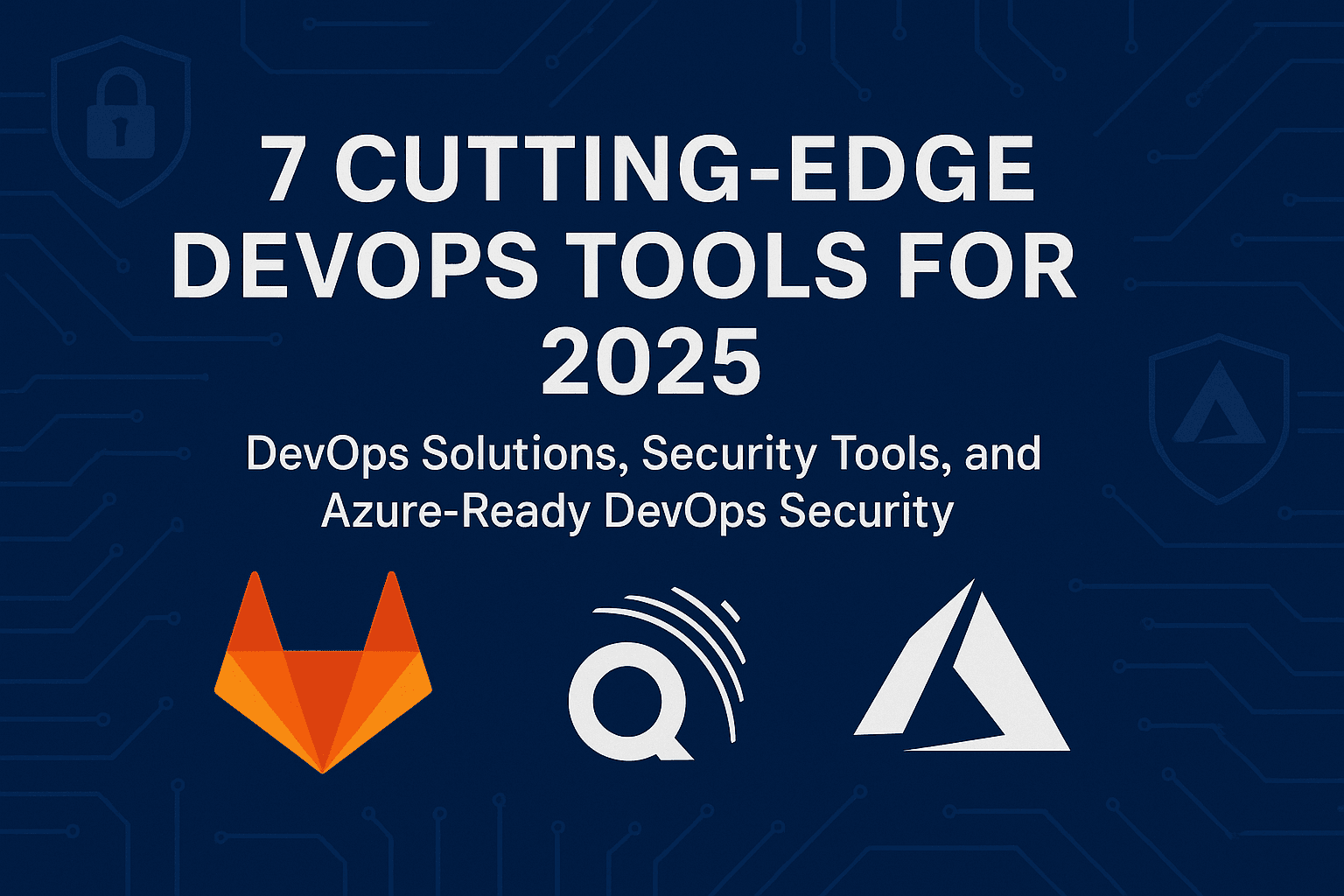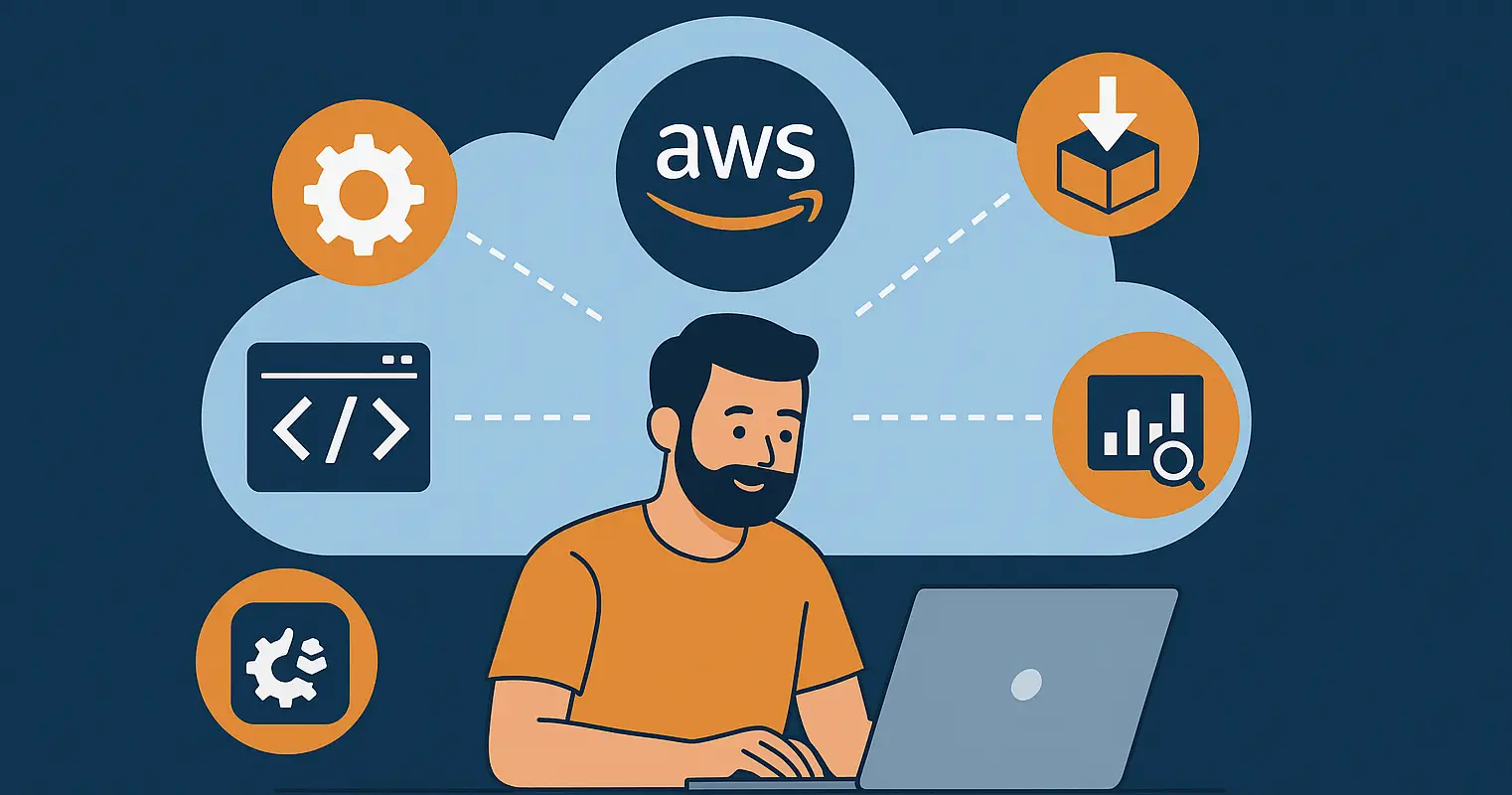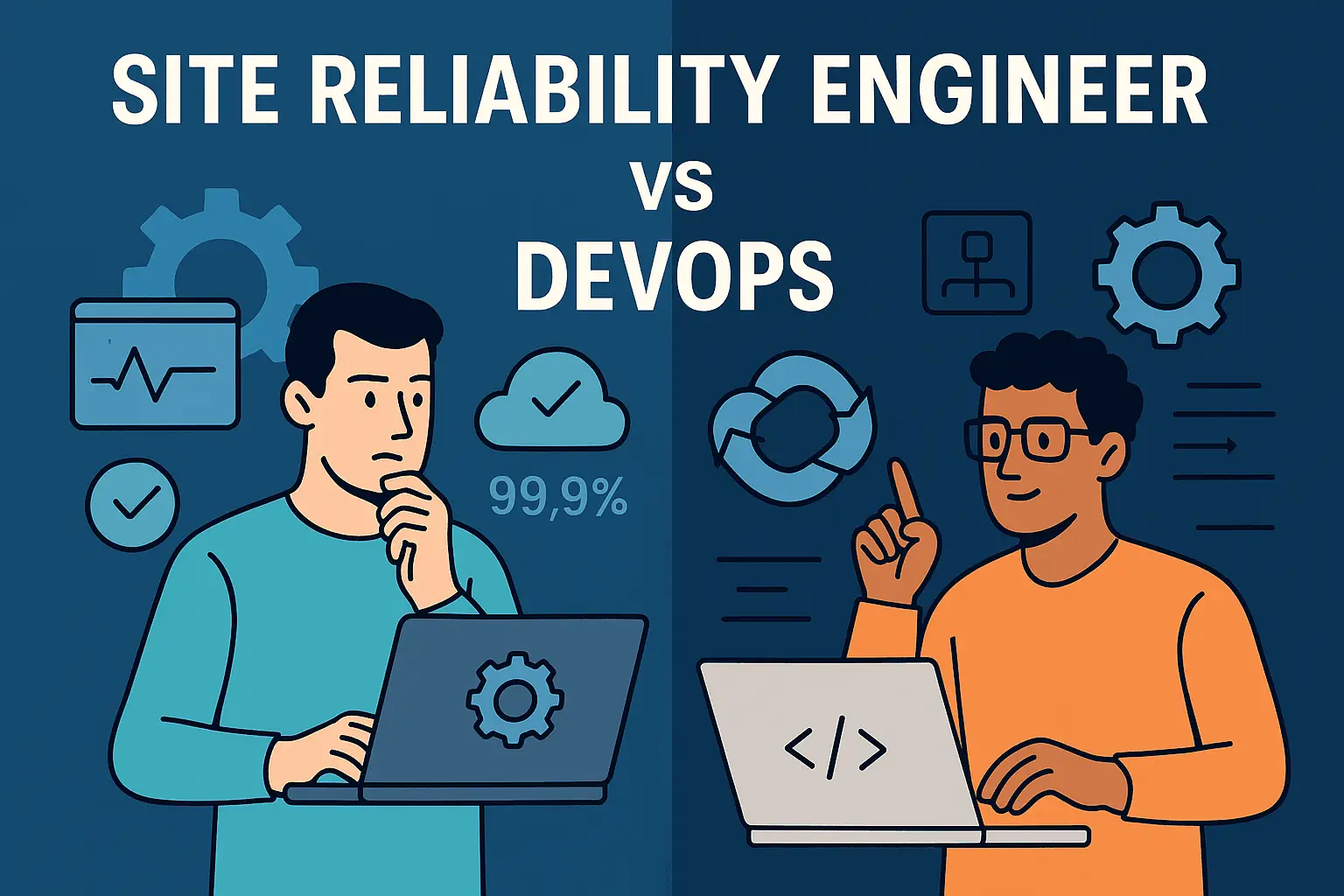What Is DevOps and Why Automate?
DevOps is a cultural and professional movement that unites software development (Dev) and IT operations (Ops) teams. The idea is to improve collaboration, reduce friction, and shorten the system development life cycle.
Without automation, this collaboration often stalls. Manual deployments, inconsistent environments, and delays in testing and feedback create bottlenecks. Automation eliminates these blockers by creating predictable, fast, and repeatable workflows.
By automating everything from code integration to infrastructure provisioning, teams work faster, make fewer errors, and spend more time solving real problems rather than babysitting servers.
The Evolution of Automation in DevOps Practices
Scripts and Cron Jobs: The Spark of Automation
In the early days, automation meant writing bash scripts or PowerShell routines to perform tasks like restarting a service or backing up a database. These scripts were often brittle, undocumented, and tied to specific environments. Cron jobs (or Windows Task Scheduler) allowed teams to trigger these scripts on schedules—useful, but not exactly intelligent or scalable.
This phase gave engineers their first taste of “set it and forget it” operations, but it lacked visibility, collaboration, and resilience.
Configuration Management Tools: Order from Chaos
As systems grew in complexity, the need for repeatability and consistency led to tools like Puppet, Chef, SaltStack, and Ansible. These allowed teams to define infrastructure state declaratively—“Install this package, start this service”—and enforce it across environments.
Now you could codify infrastructure, version control your server configurations, and avoid the dreaded “it works on my machine” syndrome. This was the first real move toward Infrastructure as Code, laying the groundwork for more holistic automation.
Cloud Platforms: Speed and Elasticity
The rise of cloud providers like AWS, Azure, and GCP changed everything. Infrastructure went from taking weeks to procure to provisioning in minutes with an API call. Suddenly, businesses could scale globally without buying a single server.
But this speed also introduced a new challenge—scale. Managing dozens or hundreds of instances manually wasn’t feasible. Automation went from “nice-to-have” to “mission-critical.”
Containers and Orchestration: Portable, Scalable Apps
Docker introduced a new level of standardization. Developers could package apps and all their dependencies into containers that ran anywhere. Kubernetes then arrived as the de facto orchestrator—automating deployment, scaling, self-healing, and networking for these containers.
This was a shift from managing machines to managing application workloads. It demanded new tooling, new patterns, and—yes—new automation strategies.
Infrastructure as Code (IaC): Treating Infrastructure Like Software
With tools like Terraform, Pulumi, and AWS CloudFormation, teams began treating infrastructure as version-controlled, testable, reviewable code. This change allowed for:
- Full reproducibility across environments
- Collaboration between devs and ops via pull requests
- Rollbacks and audit trails
IaC brought discipline and transparency, making infrastructure changes as agile as software changes.
CI/CD Pipelines: Automation Becomes a Workflow
No longer just a set of scripts, automation matured into orchestrated pipelines. Continuous Integration tools ran every time a dev pushed code. If tests passed, Continuous Deployment tools pushed that code to staging or production environments.
With modern CI/CD, entire delivery lifecycles—from commit to live deployment—can be fully automated and monitored.
Now, we’re in the era of intelligent, self-optimizing automation, where systems adapt dynamically based on real-time data and policies.
Key Benefits of DevOps Automation
Accelerating Software Development Cycles
Faster feedback loops mean quicker bug fixes and feature releases. CI/CD pipelines automatically build, test, and deploy code, turning days of work into hours.
But it’s not just speed—it’s also confidence. Knowing every code push is tested and validated reduces anxiety, making teams more experimental and innovative.
Reducing Human Error and Improving Reliability
Automation enforces consistency. You don’t have to worry about whether server #47 was configured slightly differently.
Auto-scaling, auto-healing, and declarative infrastructure all reduce risk. Combine that with automated rollbacks and blue/green deployments, and you’ve got a system that’s resilient by design.
Enhancing Team Collaboration and Efficiency
Automation removes bottlenecks. Developers don’t need to wait for Ops to provision a test environment. QA can get immediate feedback from automated test suites. Security scans run silently in the background. It’s like a factory floor where every tool is always in the right place at the right time.
Best Practices for DevOps Automation
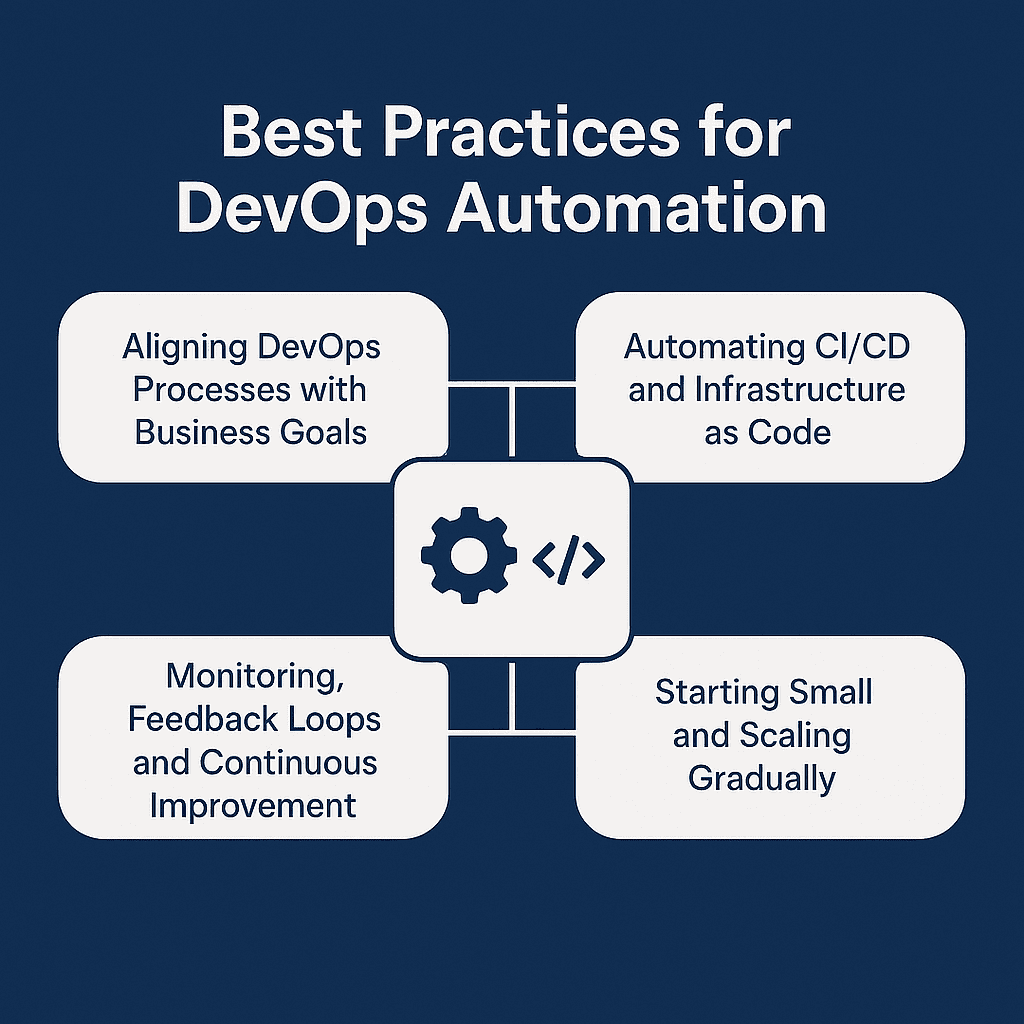
Aligning DevOps Processes with Business Goals
Automation without purpose is waste. Always ask:
- What outcome are we trying to improve?
- How will automation reduce friction in that process?
Map out the value stream and automate the pain points first. Start with tasks that are frequent, time-consuming, and prone to error.
Also, involve stakeholders—product owners, security leads, and even finance. Automation should support business agility and compliance, not just engineering speed.
Automating CI/CD and Infrastructure as Code
This duo forms the backbone of DevOps automation:
- CI ensures every commit is tested and meets quality standards.
- CD automates safe, controlled releases.
- IaC ensures that every environment—test, staging, production—is consistent and version-controlled.
Combine CI/CD and IaC to create truly immutable infrastructure. Servers are treated like cattle, not pets—if one misbehaves, it’s replaced instantly, not hand-patched.
Monitoring, Feedback Loops, and Continuous Improvement
Observability isn’t optional. You can’t improve what you can’t see.
Add business metrics to the mix—how do deployments affect conversion rates? Are customers churning after updates? Feed this data back into planning to guide improvements.
With AI in the mix, observability tools in 2025 are capable of recommending performance optimizations, identifying code regressions, and even resolving minor incidents autonomously.
Tools to Automate DevOps Processes
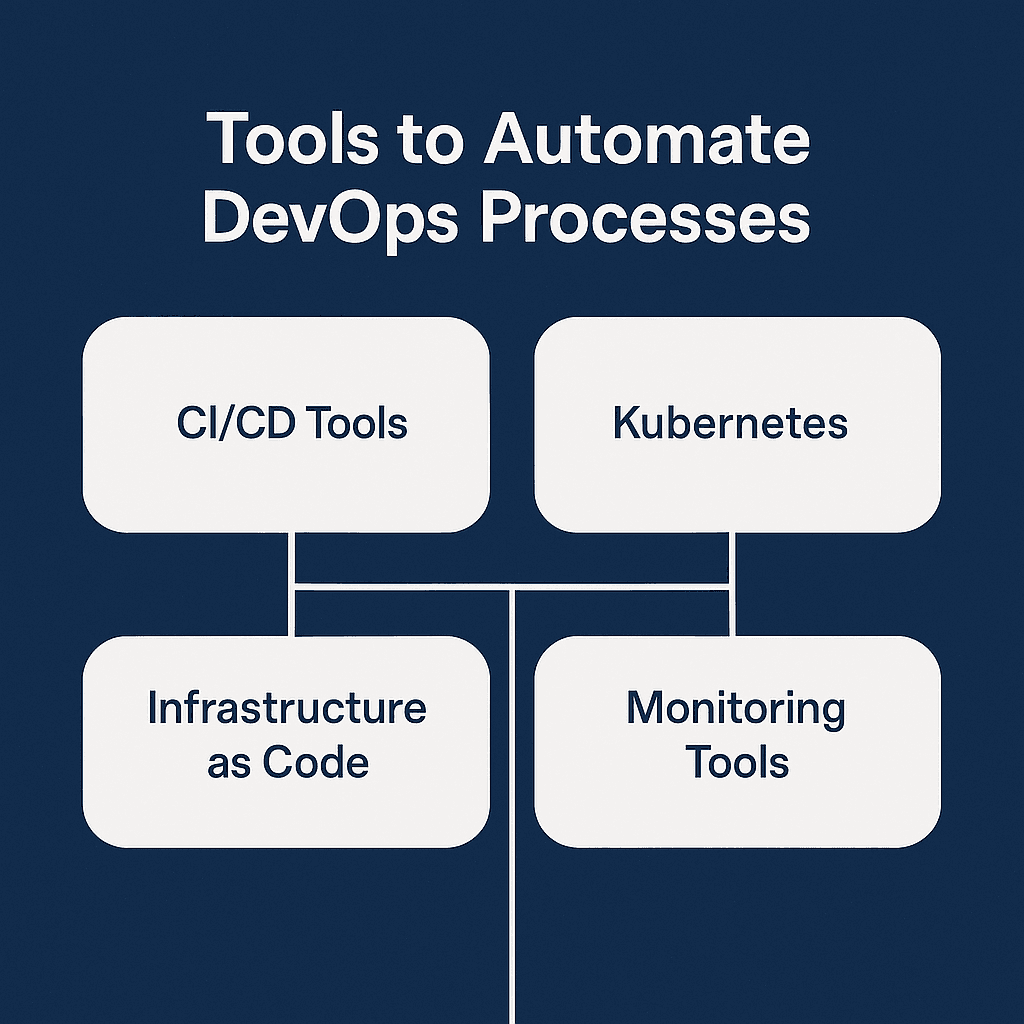
Top CI/CD Tools for 2025
A few tools dominating the space:
- GitHub Actions – Seamless for GitHub users, extensive marketplace.
- GitLab CI/CD – Integrated planning + CI/CD + repo + registry.
- CircleCI – Known for speed and robust Docker support.
- Jenkins – Flexible, albeit with more setup overhead.
- Azure DevOps Pipelines – Great for Microsoft-centric orgs.
- Cloud Build / CodePipeline – Native cloud-first CI/CD solutions.
Each has strengths; choose based on your tech stack, cloud provider, and team preferences.
Kubernetes and Azure in Modern DevOps Automation
Kubernetes is now the default platform for container orchestration. It automates service discovery, load balancing, scaling, and failover.
Azure, through AKS, offers deep integration with monitoring, identity management, and hybrid cloud with Azure Arc—which allows managing infrastructure from anywhere as if it were in Azure.
Combine Azure Pipelines with AKS and Argo CD for a GitOps-powered delivery system with security, observability, and governance built-in.
Security, Compliance, and Observability Tools
A secure pipeline in 2025 includes:
- Static & Dynamic Scanning: SonarQube, Snyk, OWASP ZAP.
- Dependency Scanning: Mend.io, Trivy.
- Compliance as Code: Open Policy Agent, HashiCorp Sentinel.
- Logging & Metrics: Datadog, Prometheus, Grafana, Azure Monitor.
These tools run silently in the background, ensuring your code, infrastructure, and environments stay safe and compliant.
Types of DevOps and Their Automation Needs
Enterprise vs. Agile DevOps Approaches
Enterprise DevOps: Complex architectures, multiple teams, strict audit requirements. Automation focuses on governance, reliability, and security.
Agile DevOps: Lean teams moving fast. Automation focuses on speed, experimentation, and developer empowerment.
Both need automation—but the emphasis shifts. Enterprises need scale and control. Startups need velocity and flexibility.
Tailoring Automation Strategies to Each Type
No one-size-fits-all. Example playbooks:
- Enterprises: Centralized IaC templates, audit trails, policy enforcement.
- Agile Teams: Serverless CI/CD pipelines, one-click rollbacks, real-time feature flags.
- Hybrid: Mix of managed services and custom orchestration.
Use automation to balance freedom with guardrails. Developers innovate within safe, pre-approved boundaries.
Conclusion: Implement DevOps Automation Effectively in 2025
You now know:
- Why DevOps + automation = better delivery.
- How tools like GitHub Actions, Terraform, Argo CD, and Kubernetes power today’s pipelines.
- Why observability, security, and CI/CD are foundational.
- That strategy matters as much as technology—start with business needs, automate the friction.
The Future of Automation in Software Development
Looking ahead:
- AI-enhanced Pipelines: Predict test failures, auto-heal clusters, and recommend performance fixes.
- Natural Language Ops: Describe environments in plain English—auto-generated IaC does the rest.
- No-Code Automation: Visual workflows enabling non-devs to automate approvals, alerts, and tasks.
We’re moving toward a world where automation is smart, adaptive, and embedded into every layer of development and delivery.

